1. Other Organic Acids
1.1. Oxalic Acids
1.2. Tartaric Acid
1.3. Anacardic Acid
2. Capsaicin
3. Resources
3.1. Phytochemicals.info
3.2. List of phytochemicals in food by Wikipedia
3.3. Listing of Foods and their Phytochemicals by Phytopia
3.4. Tips to Fortify Foods with Phytochemicals
3.5. Glossary of Phytochemicals
3.6. Phytochemicals as Nutraceuticals by Ben Best
3.7. Linus Pauling Institute: Micronutrient Research for Optimum Health.
3.8. What is the Special Nutritional Power found in Phytonutrients?
4. Polyphenolics
4.1. Natural Monophenols
4.1.1. Apiole
4.1.2. Carnosol
4.1.3. Carvacrol
4.1.4. Dillapiole
4.1.5. Rosemarinol
4.2. Flavonoids (Polyphenols)
4.2.1. Flavonoids
4.2.1.1. Proanthocyanidins
4.2.1.1.1. Olignomeric Catechins
4.2.1.2. Biflavones
4.2.1.2.1. Amentoflavone, Bilobetin
4.2.1.3. Flavanonoles
4.2.1.3.1. Taxifolin
4.2.1.4. Flavonolignans
4.2.1.4.1. Silymarin
4.2.1.5. Tannins
4.2.2. Flavonols
4.2.2.1. Quercetin
4.2.2.2. Rutin
4.2.2.3. Kaempferol
4.2.2.4. Myricetinn
4.2.2.5. Isorhamnetin
4.2.3. Flavanones
4.2.3.1. Hesperidin
4.2.3.2. Naringin
4.2.3.3. Silybin
4.2.3.4. Eriodictyol
4.2.4. Flavanones
4.2.4.1. Apigenin
4.2.4.2. Tangeritin
4.2.4.3. Luteolin
4.2.5. Flavanols
4.2.5.1. Catechins
4.2.5.2. Epicatechins
4.2.5.3. Epigallocatechin Gallate (EGCG)
4.2.5.4. Theaflavin
4.2.6. Anthocyanins (Flavonals), and Anthocyanidins,
4.2.6.1. Cyanidin, delphinidin, Malvidin, Petunidin
4.2.6.2. Pelargonidin
4.2.6.3. Peonidin
4.2.6.4. Cyanidin
4.2.6.5. Delphinidin
4.2.6.6. Malvidin
4.2.6.7. Petunidin
4.2.7. Isoflavones (Phytoestrogens)
4.2.7.1. Diadzein
4.2.7.2. Genistein
4.2.7.3. Glycitein
4.2.8. Punicalagins
4.3. Phenolic Acids
4.3.1. Hydroxycinnamic Acids
4.3.1.1. Chicoric Acid
4.3.1.2. Coumarin
4.3.1.3. Ferullic Acid
4.3.1.4. Scopoletin
4.3.2. Hydroxybenzoic Acids
4.3.3. Rosmarinic Acid
4.3.4. Ellagic Acid
4.3.5. Gallic Acids
4.3.6. Vanillin
4.3.7. Salicylic Acid
4.3.8. Tannic Acid
4.3.9. Capsaicin
4.3.10. Curcumin
4.3.11. Hydroxycinnamic Acids
4.3.11.1. Chicoric Acid
4.3.11.2. Coumarin
4.3.11.3. Scopoletin
4.3.11.4. Caffeic Acid
4.3.11.5. Chlorogenic Acid
4.3.11.6. Coumarin Acid
4.3.12. Phytic Acid
4.3.13. Cinnamic Acid
4.3.14. Ferulic Acid
4.4. Other Non-Flavonoid Polyphenolics
4.4.1. Chicoric Acid
4.4.2. Coumarin
4.4.3. Ferullic Acid
4.4.4. Scopoletin
4.4.5. Curcumin
4.4.6. Stilbenes
4.4.6.1. Resveratrol
4.4.6.2. Pterostilbene
4.4.6.3. Piceatannol
4.4.7. Lignans (Phytoestrogens)
4.4.7.1. Silymarin
4.4.7.2. Matairesinol
4.4.7.3. Secoisolariciresinol
4.4.7.4. Pinoresinol and Lariciresinol
4.5. Tyrosol Esters
4.5.1. Class Members
4.5.1.1. Tyrosol
4.5.1.2. Hydroxytyrosol
4.5.1.3. Oleocanthal
4.5.1.4. Oleuropein
4.6. Alkylresorcinols
5. Terpenoids (isoprenoids)
5.1. Carotenoids Terpenoids
5.1.1. Carotenes
5.1.1.1. Beta Carotene
5.1.1.2. Alpha Carotene
5.1.1.3. Lycopene
5.1.1.4. Neurosporene
5.1.1.5. Phytofluene
5.1.1.6. Phytoene
5.1.2. Xanthophylls
5.1.2.1. Canthaxanthin
5.1.2.2. Beta Cryptoxanthin
5.1.2.3. Zeaxanthin
5.1.2.4. Astaxanthin
5.1.2.5. Lutein
5.1.2.6. Rubixanthin
5.2. Non-Carotenoid Terpenoids
5.2.1. Saponins
5.2.2. Triterpenoid
5.2.2.1. Oleanolic Acid
5.2.2.2. Ursolic Acid
5.2.3. Terpene Limonoids
5.2.3.1. Limonene
5.2.4. Perilly Alcohol
5.2.5. Terpeneol
6. Betalains
6.1. Betacyanins
6.1.1. Betanin
6.1.2. Isobetanin
6.1.3. Probetanin
6.1.4. NeobBetanin
7. Glucosinolates
7.1. Dithiolthiones (Isothiocyanates)
7.1.1. Sulphoraphane
7.1.1.1. Brassicates
7.2. Polysulfides (Allium Compounds)
7.2.1. Allyl Methyl Trisulfide
7.3. Indoles
7.3.1. Indole-3-carbinol
7.3.2. 3,3'-Diindolylmethane or DIM
7.3.3. Sinigrin
7.3.4. Allicin
7.3.5. Alliin
7.3.6. Allyl Isothiocyanate
7.3.7. Piperine
7.3.8. Syn-propanethial-S-oxide
7.4. Sulphides
7.4.1. Diallyl Sulfide
